Search Results for Tag: Warming
Arctic infrastructure cannot keep pace
The Russian response to Greenpeace’s protest at the Arctic Prirazlomnoye oil rig made it clear to a lot of people that in spite of environmental concerns, the commercialization of the region is proceeding “full speed ahead”and enjoying top political priority. The controversial rig went into production at the end of the last year. Shipping has also increased dramatically in Arctic waters in the last few years, with international freight companies using the Northern Sea Route along the Russian coast to transport gas and other commodities. This reduces the distance between Shanghai and Hamburg by around 6,400 kilometers, compared with the usual route via the Suez Canal. Tourism is also on the up, with an increasing number of cruise ships making their way through Arctic waters during the summer months. What happens if one of these ships sinks? When the Costa Concordia cruise ship hit rocks off the italian island of Giglio in January 2012 and tipped onto its side, the risks of this kind of tourism became graphically clear. The thought of something like that happening with an iceberg in the remote regions around Spitsbergen or Greenland doesn’t bear thinking about. But that, of course, is exactly what we have to do with a view to minimising risks for people and the environment.
The Arctic Institute Center for Circumpolar Security Studies has examined existing infrastructure in the six Arctic coastal states (USA, Canada, Greenland/Denmark, Iceland, Norway and Russia). I attended a workshop as a side-event to the Arctic Frontiers conference in Tromso in January, where the initial results were presented. They should really set the alarm bells ringing.
Kathrin Keil from the IASS Institute for Advanced Sustainability Studies in Potsdam, Germany, looked at developments in the oil and gas sector. She warned that the unpredictability and variability of weather and ice conditions would severely limit the options for responding to an oil accident in the region. The ice cover in May can be between 30 and 90 percent, she explained.
The ice-free period can be as short as one month or as long as nine. To date, there is no adequate technology available to successfully deal with the results of an oil spill in Arctic waters. The Institute also says the ‘Oil Spill Response Plan’ provided by Gazprom for the Prirazlomnoye rig lacks detail. The rig is located close to several nature reserves and Kail warns that these areas would be extremely vulnerable if oil or fuel were to spill. She argues for the tightest possible safety regulations, given that this is the first offshore oil platform to go into operation in the Arctic.
Not enough icebreakers
The existing infrastructure is also inadequate for the increase in Arctic shipping, says Malte Humpert, Executive Director of the Arctic Institute. He says the icebreaker fleet is not big enough to support the growing number of vessels sailing through Arctic regions.
The increase in the number of cruise boats, especially near the Norwegian Spitsbergen archipelago and off the west coast of Greenland, is another cause for concern. If a cruise ship carrying 3,000 people were to collide with an iceberg near the popular tourist town Ilulissat, the existing search and rescue capacity would not be sufficient to cope. The available planes, helicopters and ships would be too few and take too long to reach the accident site, says Arctic Institute’s Marc Jacobsen.
With just 4,500 residents, Ilulissat would be unable to provide adequate medical treatment or shelter for people affected by the crash. Oil and other toxic chemicals dumped by the damaged vessel would be very difficult to clean-up. There is also a shortage of satellite, internet and mobile phone connections, meaning communication would be limited.
Politicians are prepared to take risks
The risks of the increasing commercialization of the Arctic are high on the priority of the region’s politicians, says Magnus Johannesson, Director of the Permanent Secretariat of the Arctic Council . In an interview at his office in Tromsø he stressed to me the importance of ongoing negotiations aimed at introducing a ‘Polar Code’ to regulate Arctic shipping. It is set to come into effect in 2016. Johannesson also referred to the SAREX exercises conducted in 2013. These simulated a shipping accident to test search and rescue capacity. But Marc Jacobsen from the Arctic Institute says the exercise was too small in scale to provide a realistic picture of readiness. There were only 250 people on the vessel used in the mock accident.
“I think everyone is aware that there could be better infrastructure, but these are the first steps,” Johannesson told me . “The Arctic states are very aware of that and doing their best to speed this up”.
Disaster in the Arctic: a possibility
Anton Vasiliev, Russia’s ambassador to the Arctic Council, assumes his country will have proper infrastructure in place along the Northern Sea Route within the next few years. Iceland’s Foreign Minister Gunnar Bragi Sveinsson also told me in an interview in Tromso he was confident that security and response infrastructure would be improved.
“In the end we are always worried about the ocean around Iceland, so the environment and security matter. The possibility of a disaster in the Arctic is why we are paying so much attention to the region,” he told me. “The attention to the economic potential of the Arctic is growing fast. But I don’t think it is moving so fast that we cannot manage it.”
But environmental groups are increasingly concerned about commerical activity in the Arctic. I noticed a distinct lack of ngo participation at the Arctic Frontiers event this year. The price of conference attendance seeems to be one factor that reduces the number of ngo people attending. On the official programme, it seems only one ngo is officially invited to speak each year. This year, it was WWF’s turn, and Nina Jensen the CEO was on one of the panels. I interviewed her in Tromso and she told me: “With the increasing ship traffic, there is a higher risk of accidents and pollution that will impact both humans and wildlife to a very serious extent. We do not know enough about the marine environment to be able to avoid serious impacts. We do not have adequate regulations in place, and there is no sufficient oil spill preparedness.” While she welcomes the Polar Code, she stresses it is only a first step, and fails to tackle issues such as black carbon pollution, invasive species and the use of heavy fuel oil.
She sees a huge discrepancy between the political rhetoric, with politicians all paying lip service to the need for a better infrastructure to protect the fragile Arctic environment, but taking little action to make this happen in time.
We also talked about the huge paradox that is Arctic oil drilling. Climate change is making it possible – and burning oil, in turn, is creating the emissions which cause climate change. The world needs to get away from fossil fuel, says Jensen. The future of the Arctic has to be renewable.
My article on this is on the DW website: Are we prepared for a catastrophe in the Arctic?
Climate Change: Arctic in denial?
If there is one place you would imagine people would have to be conscious of climate change, it would be the Arctic, where the temperature is rising around twice as fast as the global average. As I mentioned in the Ice Blog yesterday and in my article on dw.de from here in Tromsö, changes to the sea ice and temperature are altering life rapidly and visibly for people in the high north. So I was intrigued by a side-event here at Arctic Frontiers, which made it clear that this does not necessarily mean people are aware of climate change and what it involves – at least not consciously or actively.
“How to Create a Climate for Change” was the subject of the workshop organised by UArctic, the University of the Arctic. (That is not the same as Tromsö University, which is called Norway’s Arctic University. UArctic is a cooperative network of northern universities and other educational institutions.)
The workshop was looking at awareness of climate change in Norway and other Arctic regions. Kari Marie Norgaard is Professor of Sociology at the University of Oregon in the USA. She spent ten months researching in Bygdaby,a community in northern Norway and told us she had actually monitored an “incredible disconnect between the moral, social, and environmental crisis of climate change and people not realising it is happening.”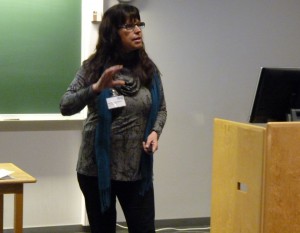
This is not limited to the Arctic, although it seems particularly striking in an area undergoing such major changes. There seems to be a widespread paradox in that climate change is leading to dramatic alterations to ecology systems and significant social consequences, but that there is no widespread sense of a need for urgent action.
This is not limited to the Arctic, although it seems particularly striking in an area undergoing such major changes. There seems to be a widespread paradox in that climate change is leading to dramatic alterations to ecology systems and significant social consequences, but that there is no widespread sense of a need for urgent action. Humans, says Norgaard, are “not getting it”. They are carrying on regardless, acting as if nothing were happening.
Denial but not climate scepticism
She speaks of “denial”, but not in the sense that people do not accept that climate change is happening. Norgaard told me she has come under a lot of pressure from the extreme right in the USA, who do not understand her distinction. Her hypothesis is that we know climate change is happening just as we know violence, rape or massacres happen. But we do not perceive it as psychologically disturbing or carrying a moral imperative to act. Norgaard is interested in how and why people collectively resist information about climate change. She focuses on Norway rather than her home country USA because this is a country with a high rate of newspaper readership, high levels of political participation,and where climate change is more visible in the northern region, and people know it is happening.
But in spite of the fact that Bygdaby is highly dependent on farming and tourism, where the climate is important, the fact that the winter had been warm, the snow was two months late and artificial snow had to be used for skiing, did not result in a heightened interest in climate change. In fact, she says, it was invisible in social or political life. One of her conclusions is that people want to protect themselves to some extent and so prefer to live as if climate change was not happening. Her theory is that people don’t want to feel guilty about their lifestyle and also try to avoid fear of the future and feeling helpless.
The greatest communication failure of all time?
Althouth Norgaard did her research in Norway, she says the findings apply equally elsewhere, including the USA, where regions are already experiencing climate impacts with economic consequences, but people don’t want to accept that it could have something to do with their lifestyle and require unpleasant action.
Per Espen Stoknes is Associate Professor at the Center for Climate Strategy of the Norwegian Business Institute NBI. He says surveys going back to 1989 in Norway show a decrease in people’s concern about the greenhouse effect and climate change .Only
4 in 10 see it as a problem and only 8% see it as being of importance. Espen stresses this is not because of a lack of knowledge. In fact, he thinks the better the facts get, the less people care.
Stoknes came up with an interesting figure. Apparently the public has the impression only 55% of climate scientists agree on global warming. In realty, it is 97%.Getting the message about climate change across is the ““Greatest communication failure of all time”, says Stoknes.
Who’s to blame?
Some of the responsibility lies with the scientists in his view. He says scientists need to lecture people less and discuss more. Another problem is that people tend to think of climate as being very distant in time and space. An IPCC estimate for 2100 seems a long way away. For people outside the Arctic, melting sea ice also seems geographically very remote. The same applies to places like Bangladesh or the Maldives.
Stoknes suggestions for improving the situation are not new. But evidently, the message has not got across – or the suggestions proved not effective. He says the media should have less gloom and doom and present more positive stories and examples of practicable action. If only it were that simple.
I remember numerous heated discussions on this topic at a Global Media Forum on Climate Change and the Media in Bonn in 2010, and atvarious other events I was involved in. Communicating climate change in a way that will make people take action in their everyday lives and put pressure on governments to do the same, remains a priority and a challenge.
One idea Stoknes has strikes me as being useful. He stresses the power of social norms to change behaviour, and suggests campaigns that make people compete with their peers – neighbours, other towns, friends, relatives, for being climate-conscious, can be effective. He talked about the success of an app where people can record and compare their energy saving.
Another possibility is to make “greener” options the default, something I was talking further about with some US colleagues today. If the normal way a printer works is to use both sides of the paper, for instance, people will do that. Not though if they have to change a setting
Plenty of food for thought here. The psychological and social dimensions of climate change awareness clearly deserve more consideration.
Oil, Industry and Arctic Sustainability
I arrived at the university campus for Arctic Frontiers this morning to find a row of young people waiting to welcome the Norwegian Prime Minister Erna Solberg with a banner protesting against fossil fuel drilling in the Arctic. Ingrid Skjoldvaer, the deputy leader of Norway’s biggest youth environment organisation told me they want the prime minister to stop Arctic drilling in Norwegian seas and be serious about cutting emissions and taking their climate goals seriously. She knows it brings in a lot of revenue, but says we need to start a transition now for a future with renewables. WWF’s Nina Jensen told me she thinks there is a growing awareness in Norway of the link between fossil fuel emissions and the climate change that is affecting the Arctic so dramatically.
No future without Arctic oil?
In her address to the conference, PM Solberg was clear about the continuing importance of oil and gas drilling for Norway. In a speech focussing on the goal of making northern Norway an “innovative and stable region” and an “attractive place to live” through sustainable development, it became clear that fossil fuel extraction is an integral part of her policy to give people living in the region employment, education, improved infrastructure and maritime safety. At the same time, she stresses, this domestic policy priority is in line with growing international interest in the Arctic.
There was acknowledgement of the problems caused by climate change. But the young people outside will have been disappointed if they hoped for any signs of a shift in fossil fuel policy (not likely in this context or in general with agreement across the parties that Arctic development is key, it seems). WWF’s Nina Jensen told me afterwards she had not expected much else, but was pleased that climate change had at least been mentioned repeatedly in the speech.
The PM stressed the government’s investment in research and development as part of the “need to seize new opportunities and meet new challenges in a rapidly changing Arctic.” The main challenge facing the High North is the lack of qualified labour, she said, stressing also that oil and gas are important areas for future developments. Clearly, the country, whose wealth is based on revenue from oil in the past, is going full speed ahead for Arctic development. Sustainability? Always mentioned, but there still seems to be no answer to the question of how drilling for Arctic oil and continuing climate-changing emissions from fossil fuels can be sustainable.
Greenland, the “ice island”
Imagine a giant island with 3 climate zones, being pushed almost 2km northwards each year. That statistic was quoted by Greenland’s premier Alequa Hammond in her speech. It illustrates graphically the huge changes facing the environment and people of the world’s biggest island with the ice sheet that contains the biggest amount of water in the northern hemisphere and is of key importance to the world climate and global sea levels.
I had awaited the speech by Greenland’s premier Alequa Hammond with interest and was not disappointed. She started by saying she was going to talk not primarily about oil, gas and mining as most might expect, but health and the environment. (Not that the two are unconnected). In her talk, she brought home the effects of climate change on the traditional lifestyles of indigenous Greenlanders in what seemed to me an authentic and sincere way. As well as the melting ice problem, she talked of the contaminants polluting the environment and finding their way into Arctic mammals. Whether you just love them as part of our biodiversity for the sake of it or want them for your food supply, pollution from industrial activity far, far away, is endangering animal life up here.
Hammond is a realist. She knows her small country needs revenue to achieve the goal of full independence from Denmark. But she is also well aware of the negative impacts of rapid industrialisation on a people traditionally very close to nature. While physical health has been improved by better housing, nutrition and health care in the last 50 years, Hammond stresses the negative mental and physical health effects of a loss of traditional values. She mentioned the above-average suicide rates in northern circumpolar areas. Then there are chronic illnesses and heart disease brought on by a shift from hunting and fishing to “office-worker lifestyle”. Urbanisation is another factor, with 80% of the 15.000 Greenlanders living in the capital Nuuk and only 20% in villages, whereas just 100 years ago everyone lived in small settlements.
Hammond identifies the dilemma: How to bring Greenland the prosperity it needs using easier access to oil, gas and minerals, made more accessible through climate change, without destroying a society rapidly being catapulted from a traditional nature-based rural lifestyle into the realities of the industrialised, commercialised, globalised world where the environment has at best secondary priority?
She talked a lot about the special relation with Denmark, the former colonial power. For her it is clear that Greenlanders have the right to complete self-determination – without losing that close relationship.
There was just one thing that I did not find adequately addressed in Hammond’s presentation. She made a clear case for the need for environment protection. We need to do more on maritime safety, oil spill preparedness, cost-effective surveillance solutions to detect oil spills, search and rescue. But when she proudly refers to her government’s controversial decision to abandon the country’s zero-tolerance policy of mining uranium and other minerals with radioactive content, I find it hard to see how this fits.
Another clear message was that outsiders should not interfere. While Hammond said she approved of the decision to have non-Arctic speakers at Arctic Frontiers (and at a time when the secretariat of the Arctic Council here in Tromso is holding a high-level closed doors meeting discussing the role of the many observers to the body), she said “It is clear for me that development in the Arctic should be given by the needs and inspirations of the people of the Arctic. Anything else would be wrong.” At the same time she appealed to any new partners in the Arctic to bear in mind that even small changes will have a big effect on a small indigenous population. Perhaps this reflects the realistic knowledge that developing the Arctic will not be possible without the economic power and the expertise of outsiders. Fine food for thought on this final day of the political part of a conference on “Humans in the Arctic”.
Updates on Twitter @iceblogger
Canada and Russia rippling muscles in the Arctic
Enjoying my morning tea the other day, my attention was caught by an Arctic headline in our local newspaper. When the Arctic makes its way into a publication I read rather for its regional flavour than international current affairs, I get the feeling there are certainly things afoot. Or is it just that stories involving Russia and any possible military conflict appeal to the public at the moment? The story was the latest sabre-rattling by Vladimir Putin, saying Russia would be stepping up its military presence in the Arctic to defend the country’s geopolitical interests.
The Kremlin chief has been turning into a bit of a public enemy number one here, with the arrest of the “Arctic 30” and refusal to comply with the international maritime tribunal, the pressure on the Ukraine to keep away from the EU and the publicity of the treatment of homosexuals in the run-up to the winter Olympics. Now the big, bad Russians are sending soldiers up to the North Pole, that iconic supposedly untouched frozen waste at the top of the planet, which belongs to no country. Not so far anyway.
We remember how a Russian submarine planted its flag on the seabed under the North Pole in 2007. Back in 2001 Russia submitted a claim to extend its nautical borders to the UN commission on the limits of its continental shelf. In the meantime, the rapidly warming climate has increased the international race to get at Arctic resources and develop an infrastructure to profit from increased shipping through the area.
I do find it a matter of concern that Russia is re-opening military bases in the Arctic and has sent warships up there for the first time in more than 20 years. Luke Harding in the Guardian links Russia’s renewed interest in the region directly to Putin’s ascent to the Kremlin in 2000. In contrast to the policies under Dmitry Medvedev, “Putin’s Arctic rhetoric has been hawkish”, Harding writes. The same can be said of Canada’s conservative prime minister Stephen Harper. Canada has just submitted its claim to the UN Commission and says it will actually be laying claim to the North Pole soon. As current chair of the Arctic Council, Canada has been stressing the need to develop the region. This week I talked to a Canadian colleague, who was flabbergasted by the latest Canadian antics concerning the High North. His scepticism was based on what he sees as a huge discrepancy between the might of Putin’s Russia and a Canada with limited military resources.![]()
![]() Let us hope that military power is not what will decide the struggle for the North Pole and the Arctic in general. If the countries put as much effort into reducing emissions and developing climate-friendly technologies as into military developments – and I am thinking of political rhetoric and pr as much as actual spending – the Arctic might be able to continue to be the remote, frozen area at the top of the world with its unique ecosystems preserved for future generations.
Let us hope that military power is not what will decide the struggle for the North Pole and the Arctic in general. If the countries put as much effort into reducing emissions and developing climate-friendly technologies as into military developments – and I am thinking of political rhetoric and pr as much as actual spending – the Arctic might be able to continue to be the remote, frozen area at the top of the world with its unique ecosystems preserved for future generations.![]()
Atlantic cod pushing out Arctic relatives?
When I visited the AWI Biological Institute on the German North Sea island of Helgoland last year for a story on how climate change is affecting marine life, the Institute’s Director Karen Wiltshire mentioned to me that cod was disappearing from the waters around the island. The Atlantic cod, it seems, are moving north, a trend confirmed by a recent research cruise by scientists from the Alfred-Wegener-Institute (AWI).
![]() read more
read more



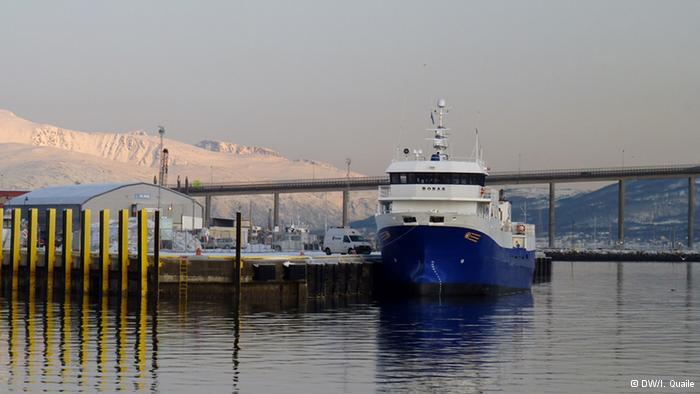
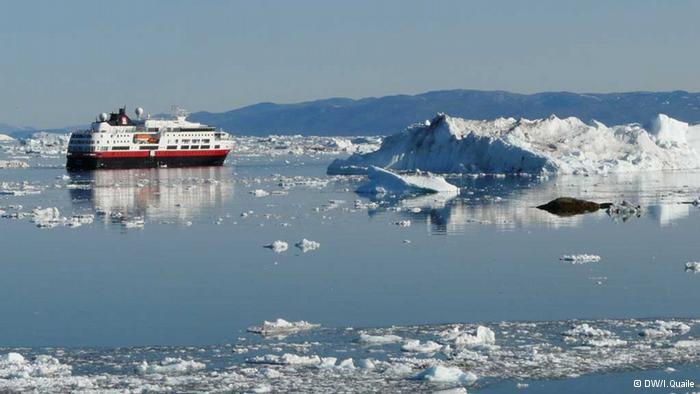


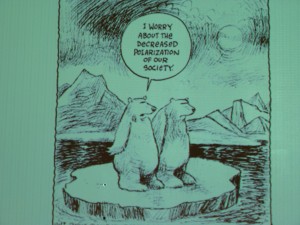
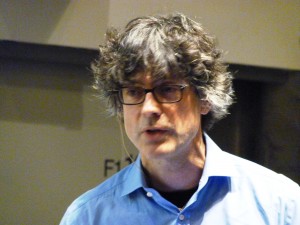
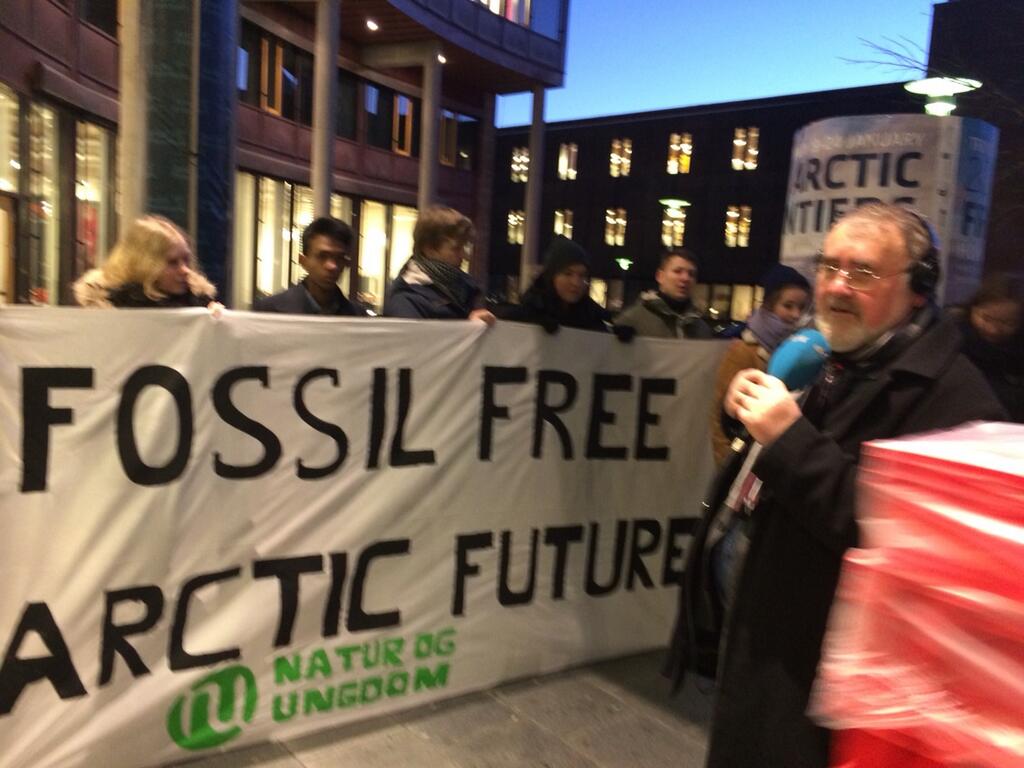
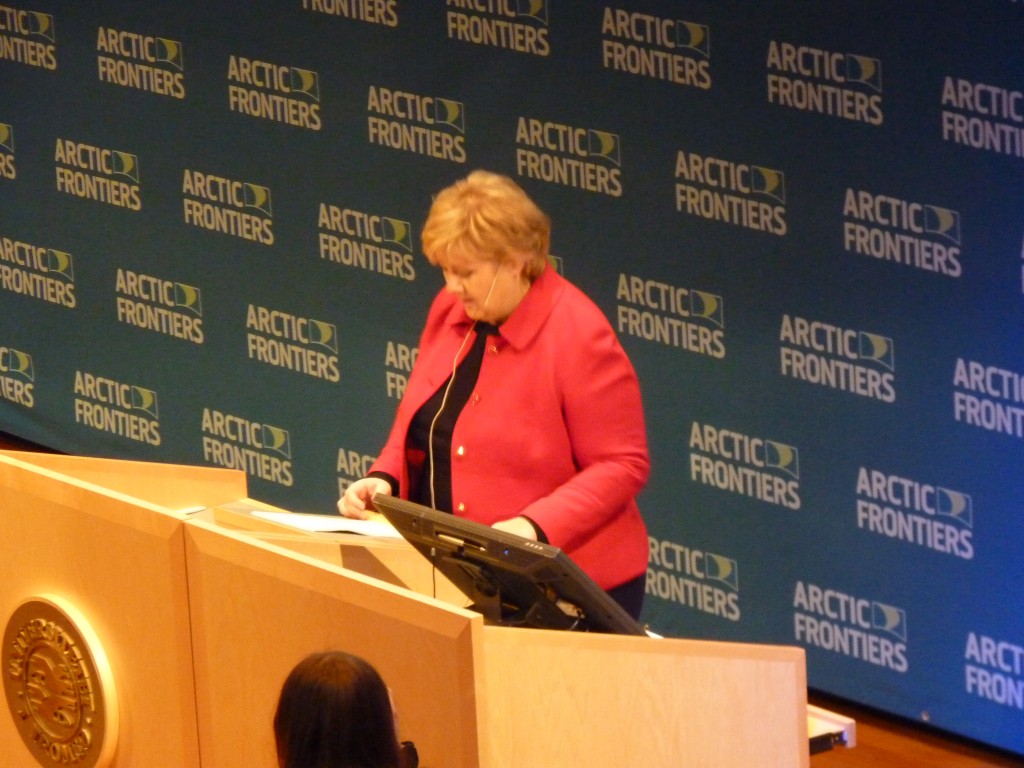
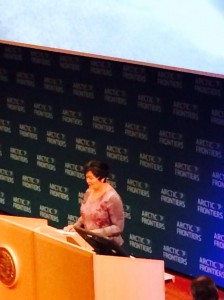

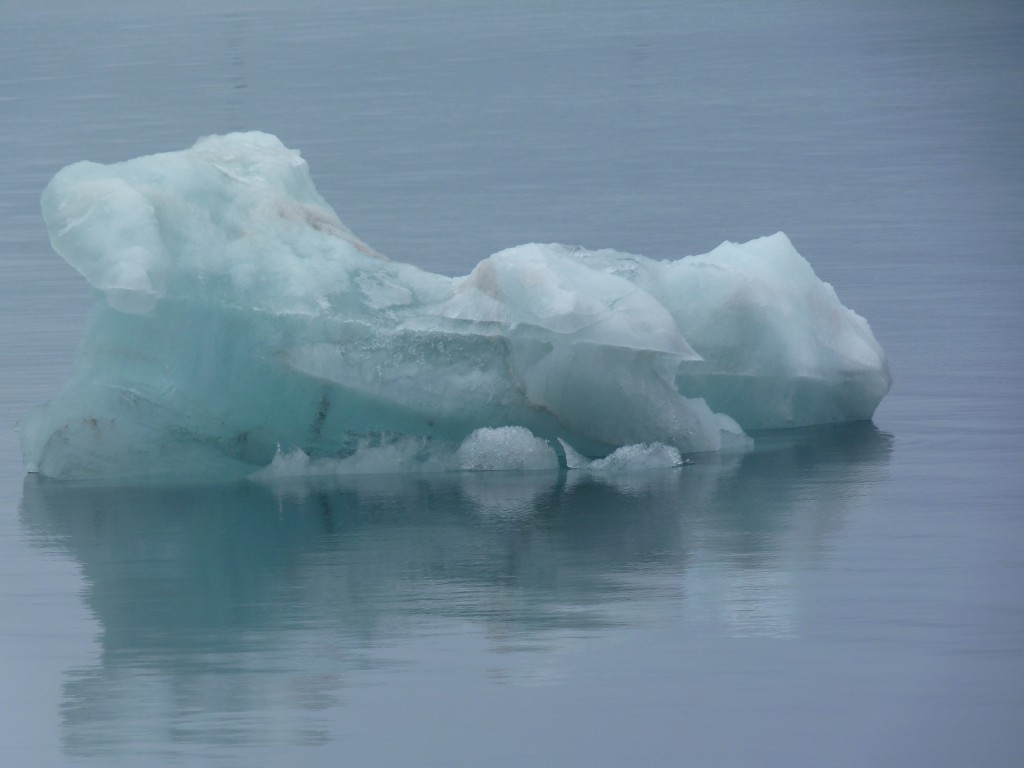
















Feedback